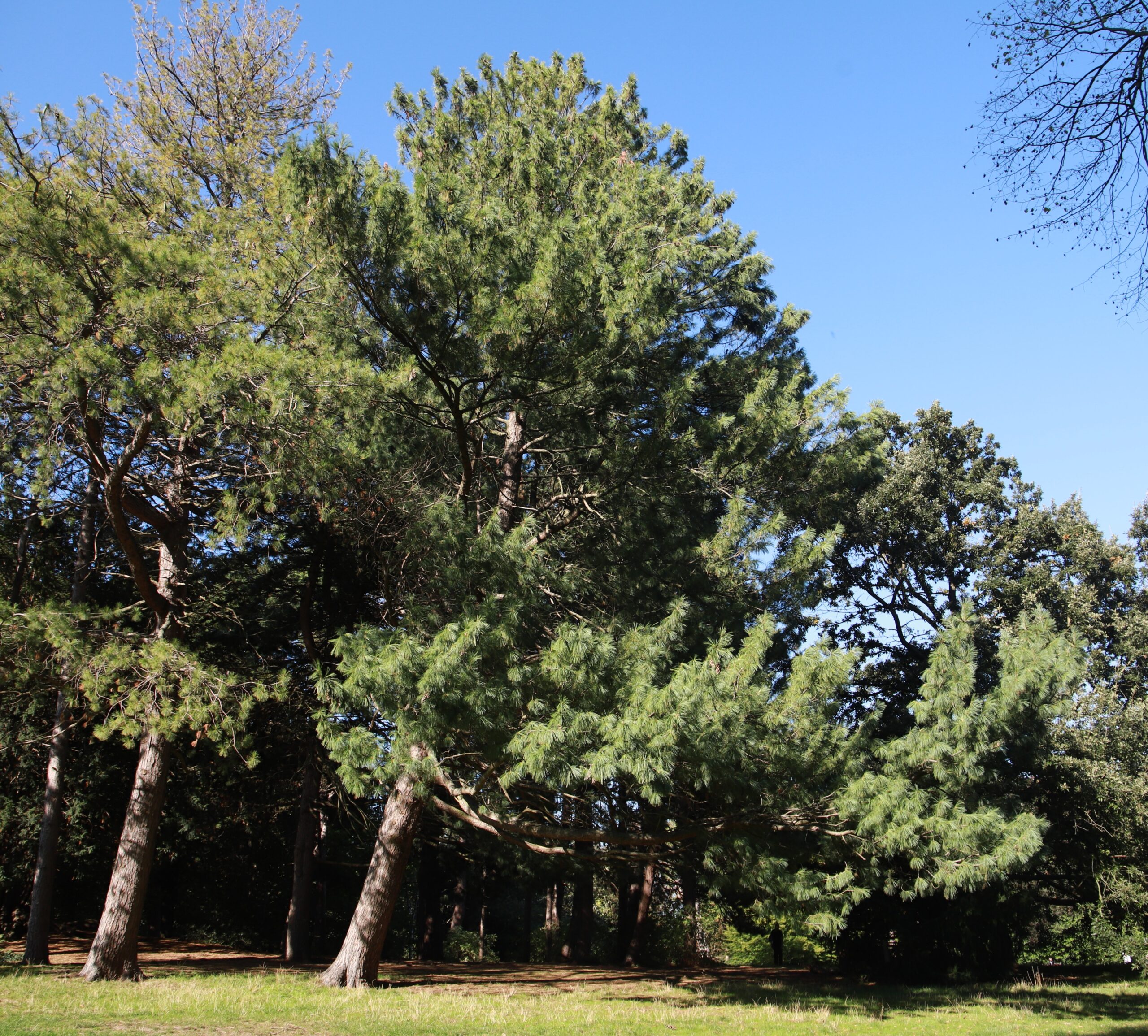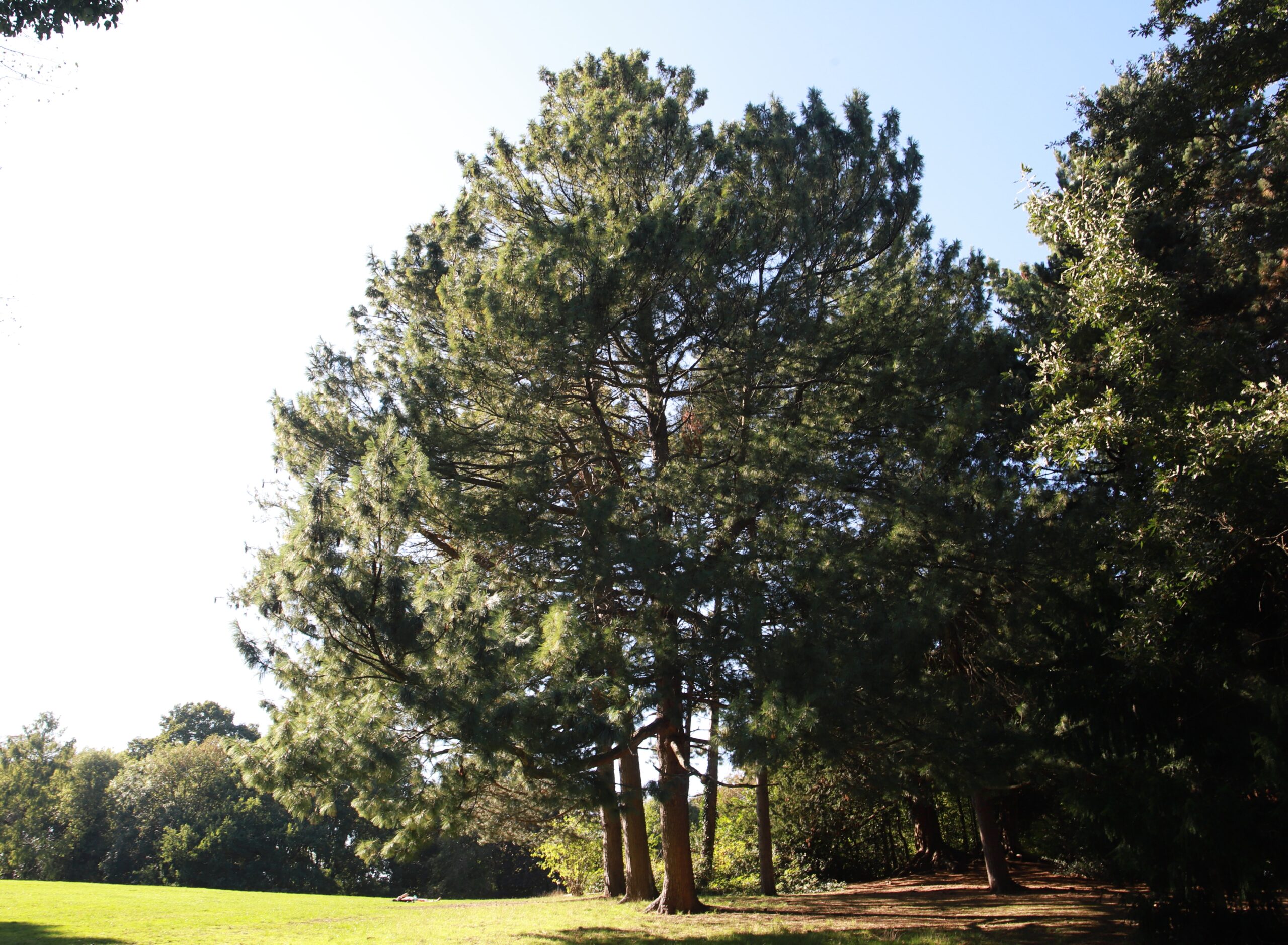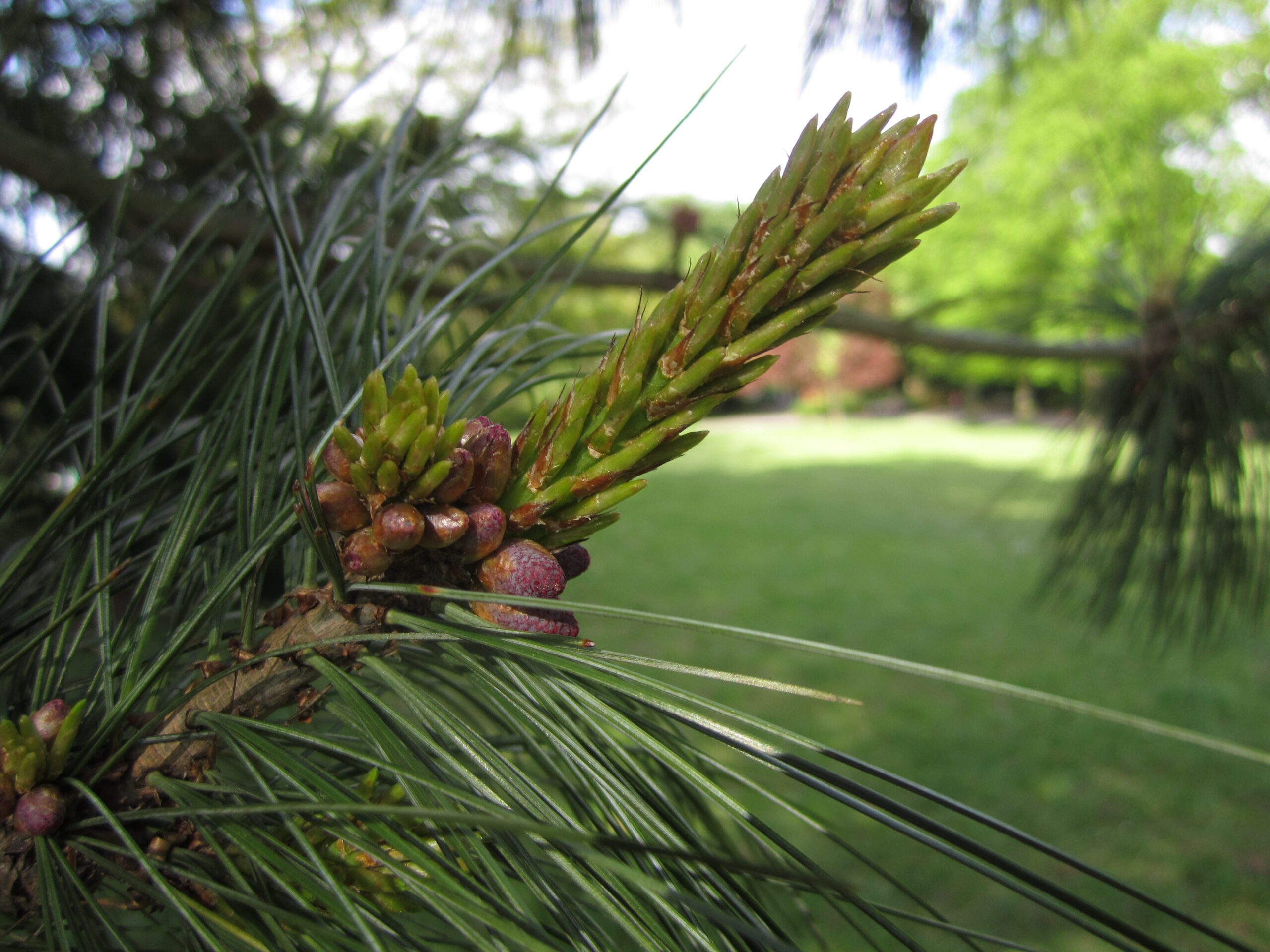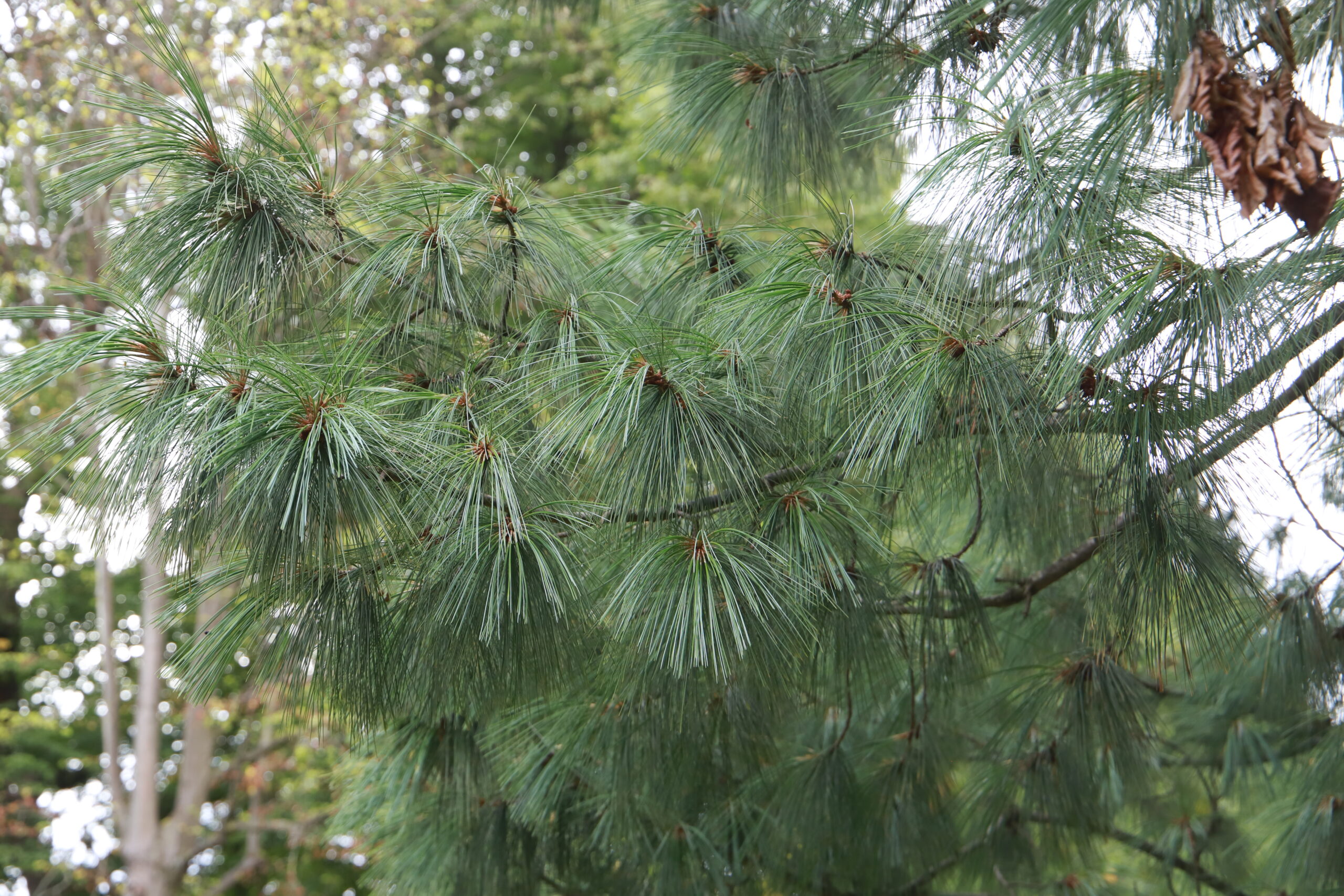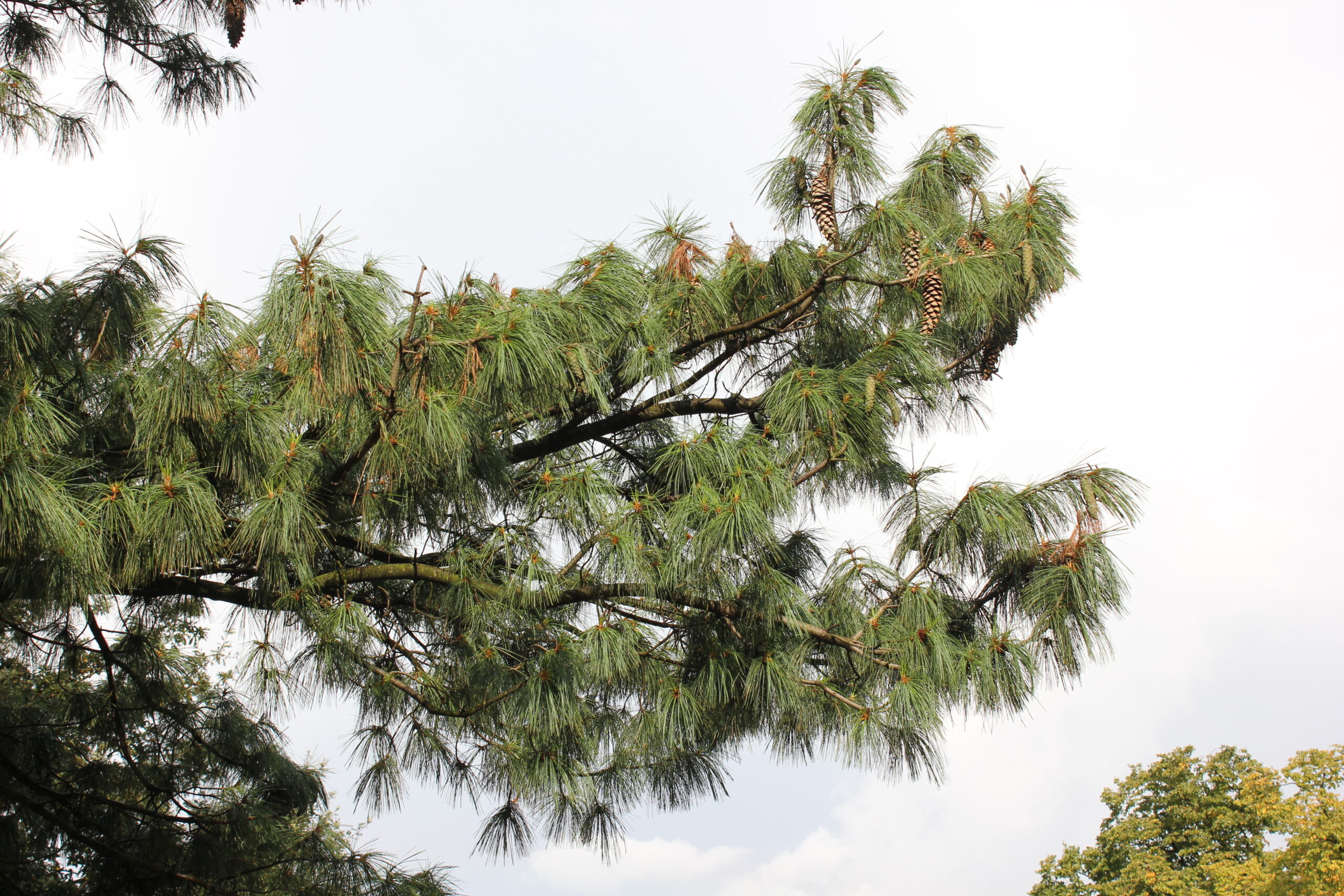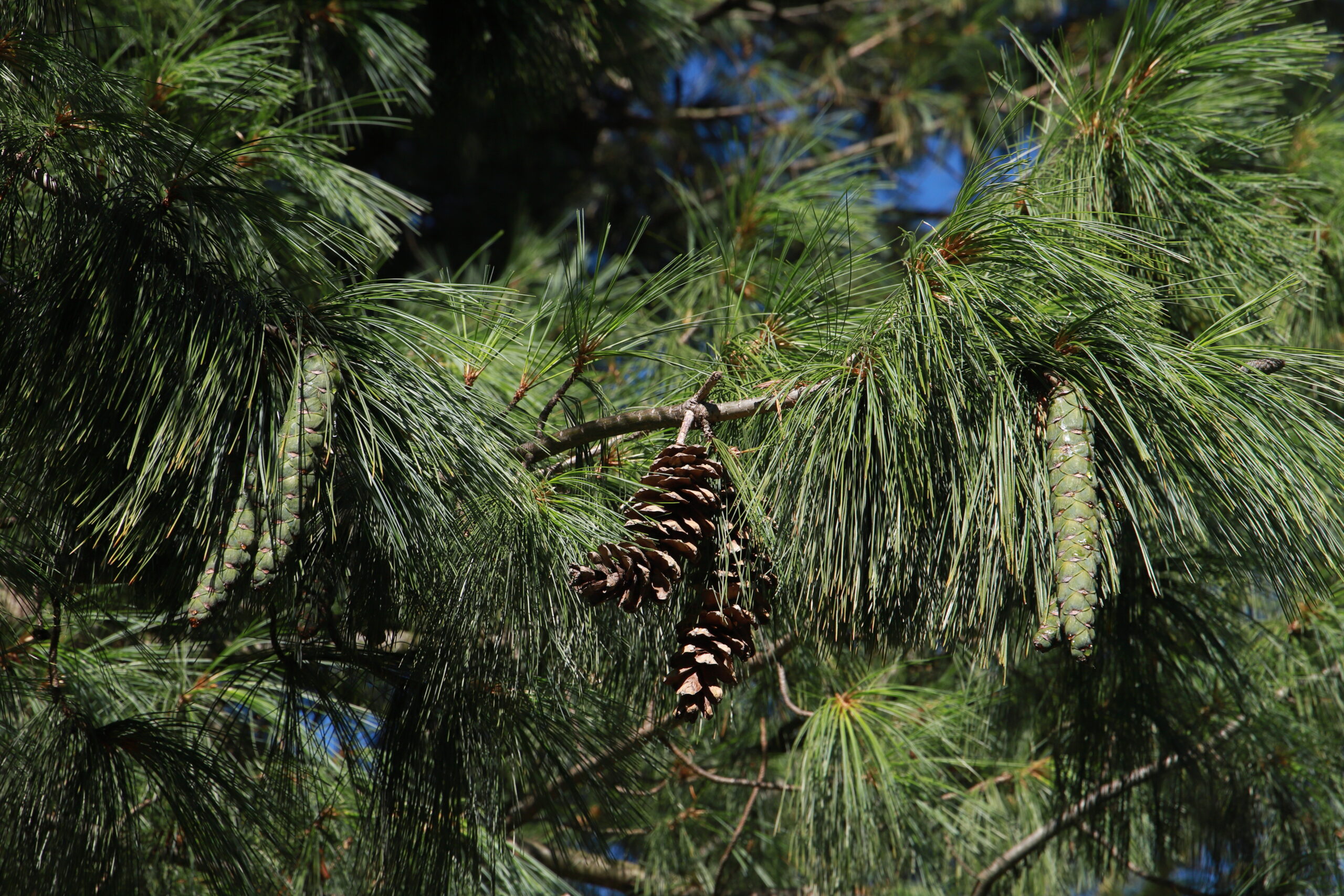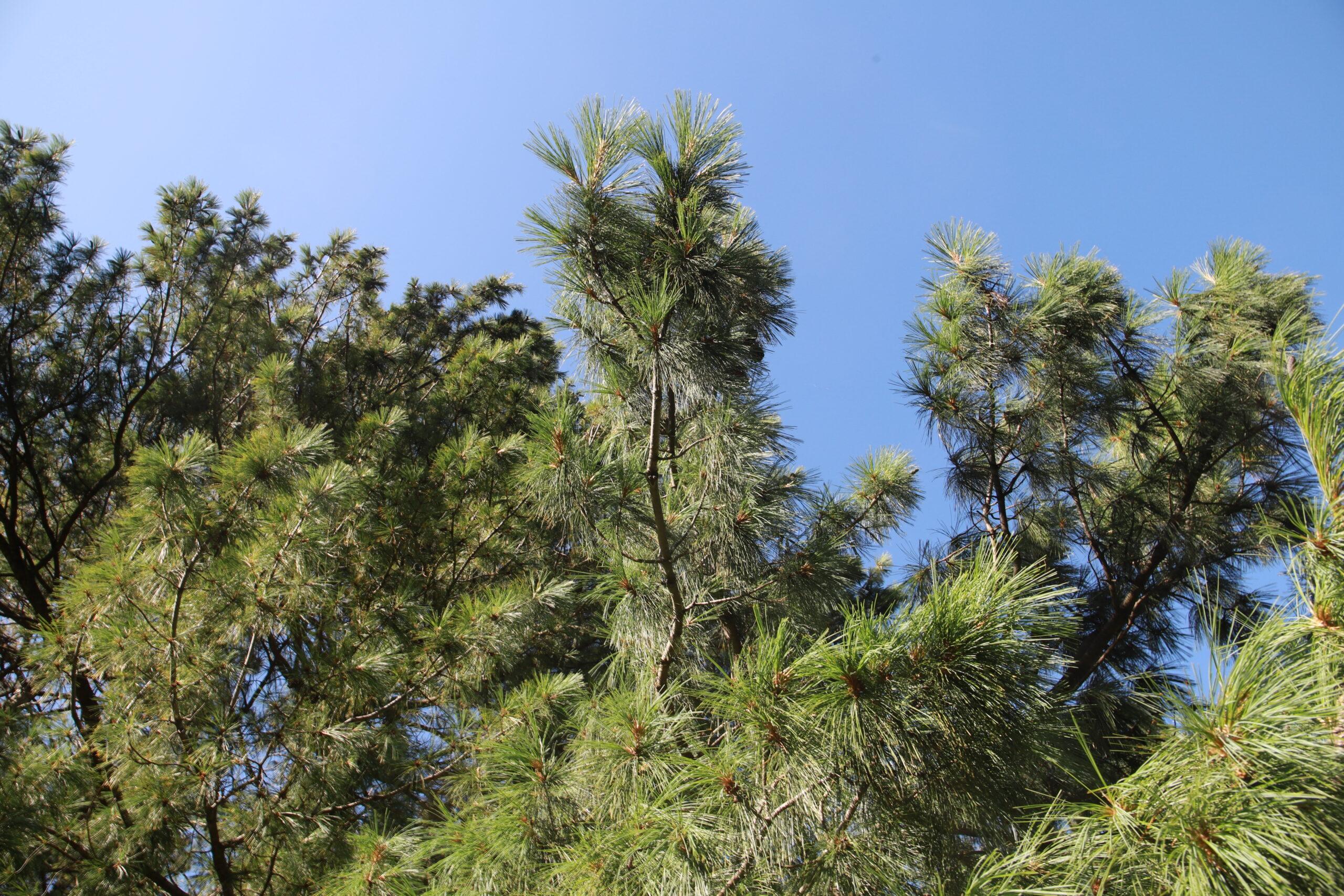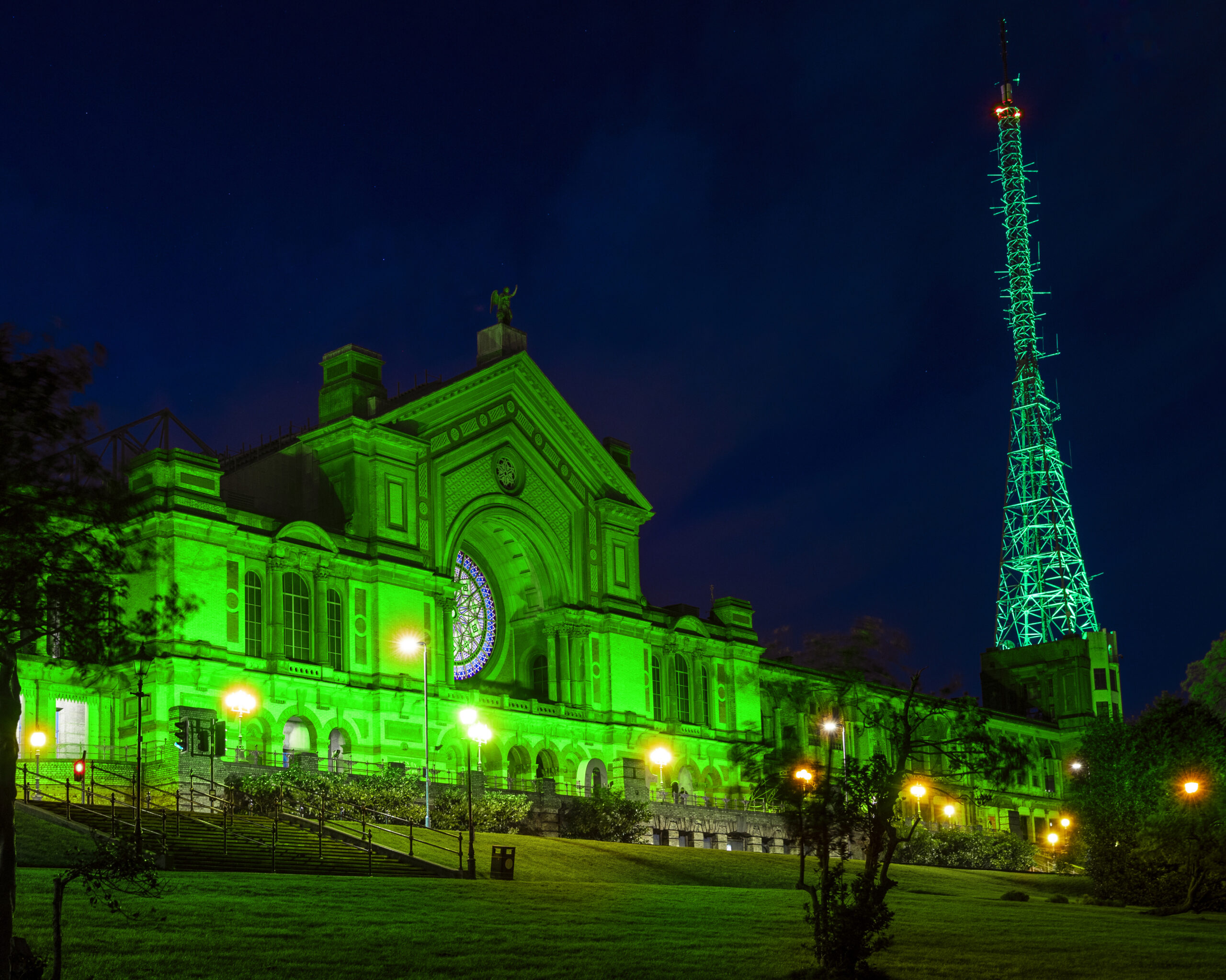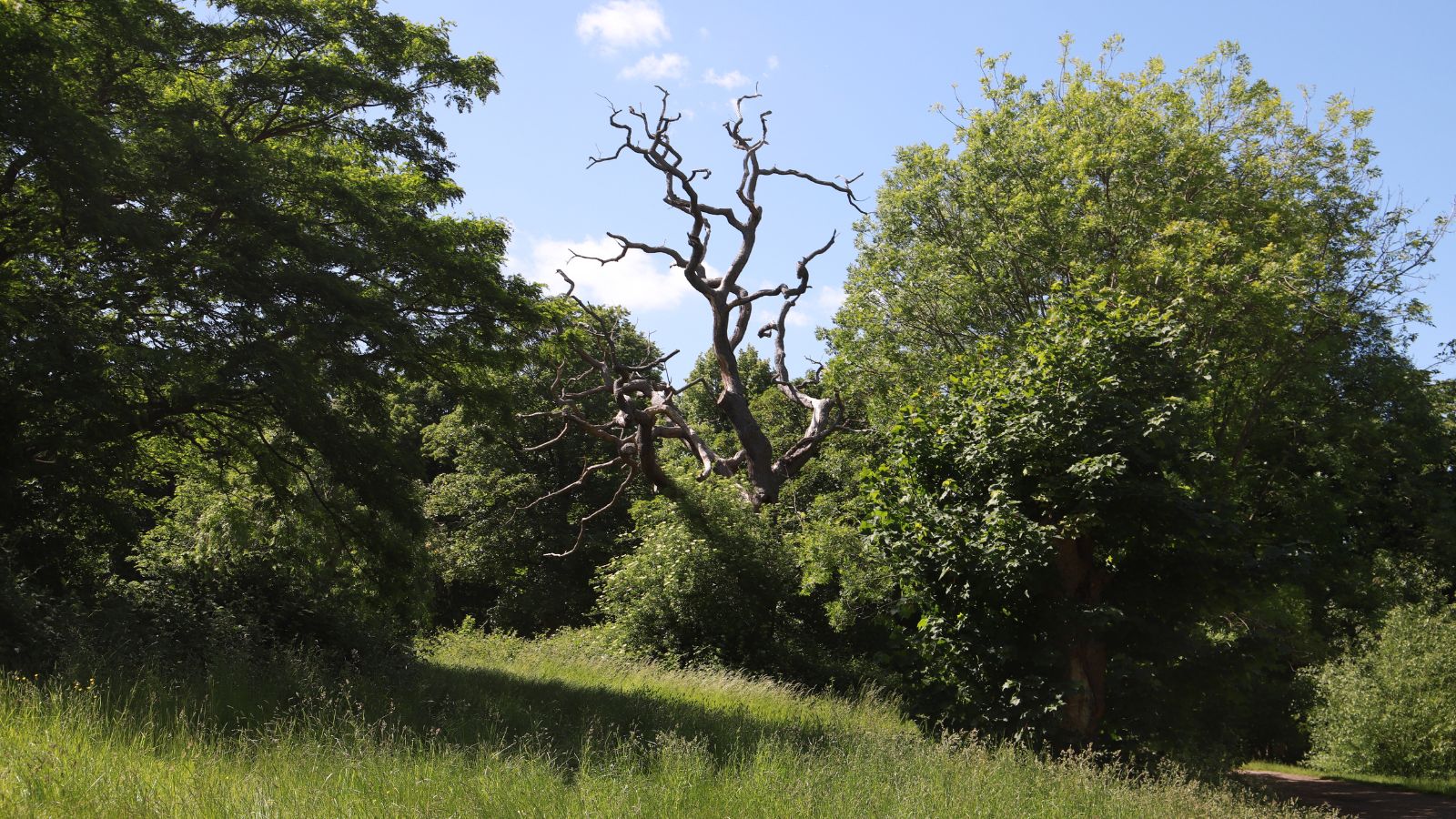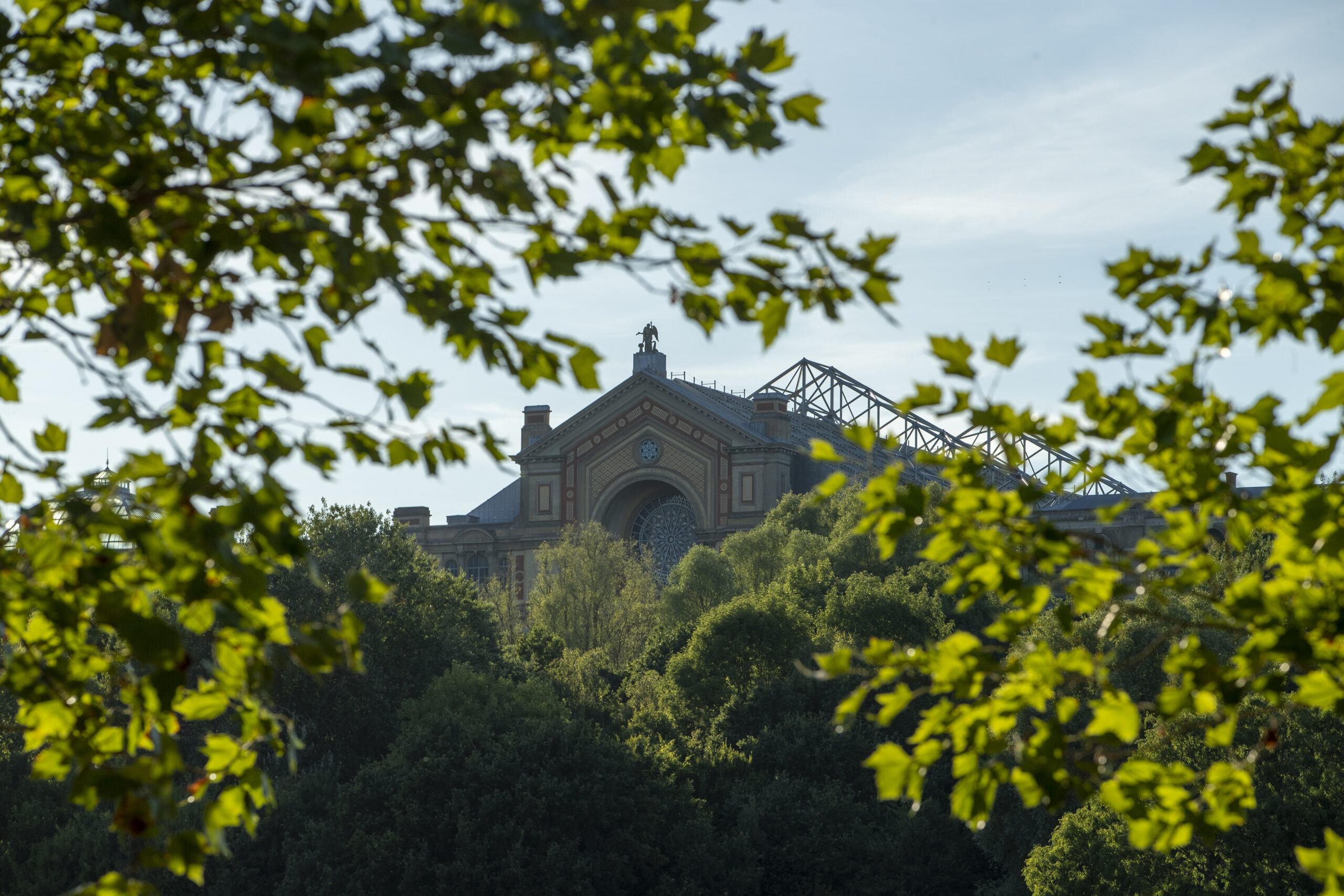There are over 7,000 trees in Alexandra Park and our resident expert, Stephen Middleton from The Friends of Alexandra Park, is introducing us to some of this favourites.
A pine tree with long soft needles is our September Tree of the Month. The Bhutan Pine (Pinus wallichiana) is found on the slopes of the high mountains in countries from Pakistan to India and China and from Afghanistan to Nepal including the mountainous country after which the tree is named.
Our Bhutan pine can be found by standing next to the Olympic chainsaw sculptures in the Grove and walking clockwise around the adjacent oak tree to find a slightly leaning tree with soft, feathery needles in groups of five, our tree of the month. Feel the needles – they are definitely light to the touch.
On the ground under the tree, there is always a good chance of finding one of the long, slightly curved cones, but watch out they are quite sticky with resin. Younger
cones visible on the tree are a green colour before they open up. True pine trees have needles that are grouped in bunches of either two, three or five. Like most conifers (and all pines) this tree will keep its needles throughout the coming winter. However, the needles don’t last forever and will typically be replaced piecemeal after about three years.
In its native area the tree grows on the slopes of the Himalayas and Karakoram mountains and can reach over 40metres in height. The trees are useful in protecting the slopes from soil erosion. Bhutan pines have been used as a source of turpentine and as building and furniture material. In this country the tree is planted mainly for its attractive foliage.
The tree was introduced into Britain in the 1820s by Aylmer Bourke Lambert, a British Botanist, and its scientific name is in recognition of the Danish botanist Nathaniel Wallich. In Britain the tree can rise up to a maximum of 30 metres.
There are two other species of pine in the park, one is close to the Bhutan pines, the coarse, two-needled black pine and other is the Scots pine (examples on the south slope and by the boating lake) which also have thicker needles in pairs. Feeling the needles of these other pines they are quite stiff and could never be described as feathery in contrast to our tree of the month.
